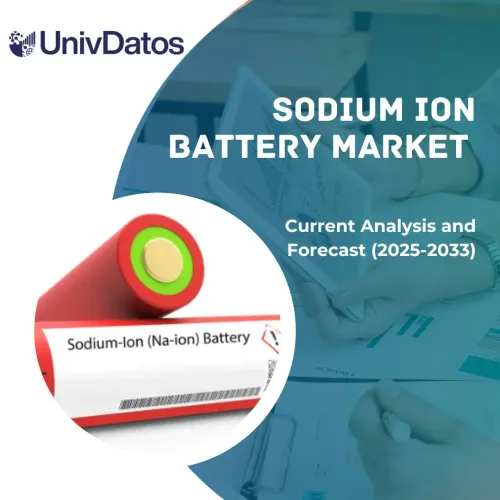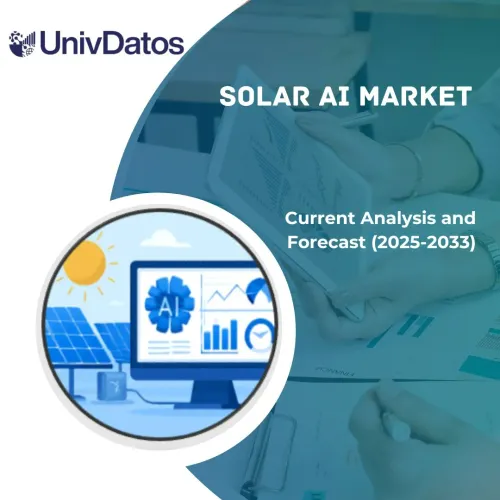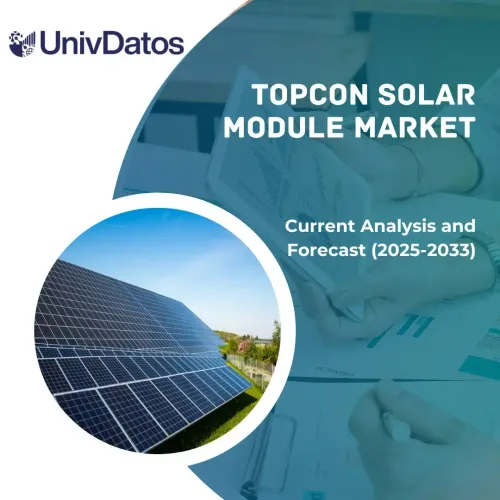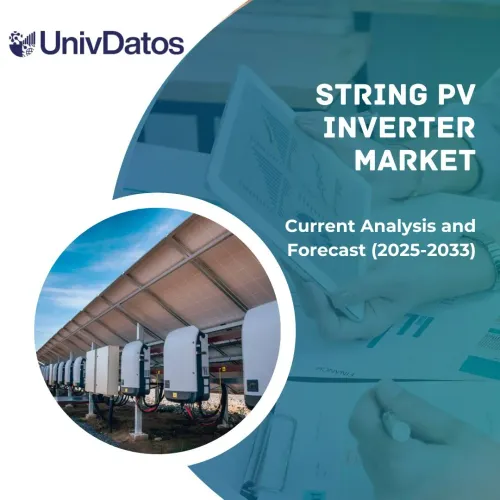- Home
- About Us
- Industry
- Services
- Reading
- Contact Us
India Solar Energy Market: Current Analysis and Forecast (2021-2027)
Emphasis on Technology (Photovoltaic Systems, Concentrated Solar Power Systems); Solar Module (Monocrystalline, Polycrystalline, Cadmium Telluride, Amorphous Silicon Cells, Others); Application (Residential, Commercial, Industrial); End-Use (Electricity Generation, Lighting, Heating, Charging); Region
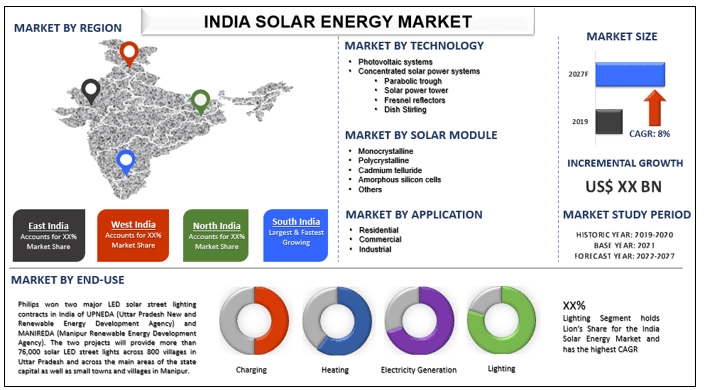
Indian Solar Energy Market is expected to exceed at a significant CAGR of ~8% during the forecast period (2021-2027). The Indian Solar energy scenario has witnessed a visible impact in the last few years. Decentralized and distributed applications of Solar energy have befitted millions of people in Indian Villages by meeting their lighting, cooking and other energy needs in an environmentally friendly manner. Social and economic benefits of solar energy include the reduction in drudgery among rural women and girls originally engaged in the collection of fuel wood by a time-consuming process and had to cook in smoky kitchens. This has reduced the risks of contracting lung and eye ailments, employment generation in the village and ultimately improving the standard of living and creation of opportunity for economic activities at village level. According to the assessment by the National Institute of Solar Energy, the country has the solar potential of about 748 GW if 3% of the waste land area can be covered by Solar PV modules. Solar energy has become the central most important project in the National Action Plan on Climate Change with National Solar Mission as one of the key missions.
The National Solar Mission (NSM) was launched on the 11th of January 2010. NSM is the major initiative of the Government of India with active participation from States to promote ecological sustainable growth while also addressing energy security challenges of India. The Mission targets to installing 100 GW of grid-connected solar power plants by 2022. The Covid-19 pandemic significantly increased the supply of solar panels which resulted in the delay of solar projects. Major factors which are driving the market growth include declining costs of solar modules and government policies, such as slowing 100% FDI under automatic renewable power generation route and distribution projects that is expected to increase the participation from global players into the Indian market. Moreover, the sharp decline in prices of solar technologies in recent years by more than 52% between 2010 and 2020 have played a major role in the driving the solar PV market in the country. The key drawback of solar energy market is the availability of lower cost alternatives in China which manufactures 8-10% cheaper modules than India. This has caused a huge dependency on imports of solar panels has hindered domestic manufacturing which be affect the market growth.
Status of Solar Park Development (MW), March 2019
Adani Group, Emmvee Solar, Mahindra Susten Pvt. Ltd, Sterling and Wilson Pvt. Ltd, Tata Power Solar Systems Ltd, Vikram Solar Limited, ReNew Power Pvt. Ltd, NTPC Ltd, Azure Power Global Ltd are some of the prominent players operating in the Indian Solar Energy market. Several M&As along with partnerships have been undertaken by these players to facilitate customers with hi-tech and innovative products/technologies.
Insights Presented in the Report
“Amongst Technology, Concentrated Solar Power Systems segment holds the major share”
Based on technology, the India Solar Energy market is segmented into Photovoltaic systems and Concentrated solar power systems. Concentrated solar power systems are further sub segmented into Parabolic trough, Solar power tower, Fresnel reflectors, and Dish Stirling. Amongst Type, the Concentrated solar power systems segment dominated the market in 2020. Coal fired thermal power plants are the dominant source of energy generation in India. Coal-fired thermal plants utilize 5-7 Cu m water per MWh of electricity generated, where concentrated solar power systems utilize only 2-3 Cu m water per MWh of electricity generated for cooling and washing mirror surfaces.
“Amongst Solar Module, Polycrystalline Segment holds the major share”
Based on Solar Module, the India Solar Energy Market is segmented into Monocrystalline, Polycrystalline, Cadmium telluride, Amorphous silicon cells, and Others. Polycrystalline solar panels are most used in India because of their lower cost as compared to monocrystalline solar panels. However, monocrystalline panels are more power efficient than polycrystalline ones because of their structural difference.
“Amongst Application, Residential segment holds the major share”
Based on Application, the India Solar Energy market is segmented into Residential, Commercial, and Industrial. Amongst application, the Residential segment dominated the market in 2020. Fossil fuels and electricity bills are getting expensive due to limited resources; thus, people are shifting towards solar panels for ecofriendly as well as cost effective sources. Solar Panels and Solar devices are alternatives to the conventional source of energy, and the demand of solar panels is increasing constantly.
“Amongst End-Use, Lighting segment holds the major share”
Based on End-Use, the India Solar Energy market is segmented into Electricity Generation, Lighting, Heating, and Charging. Amongst End-Use, the Lighting segment is expected to witness significant growth during the forecast period. Close to 300 million people in India have no access to electricity and depend on wood fire or kerosene for lighting needs. The Prakash Path initiative started jointly by the government and private sector is working on introducing solar lighting in rural parts of India.
“South India represents one of the largest markets of Indian Solar Energy market”
For a better understanding of the market dynamics of the Indian Solar Energy market, a detailed analysis was conducted for different regions across India including East India, West India, North India, and South India. South India dominated the market owing to increasing energy demand in the region.
Reasons to buy this report:
- The study includes market sizing and forecasting analysis validated by authenticated key industry experts
- The report presents a quick review of overall industry performance at one glance
- The report covers an in-depth analysis of prominent industry peers with a primary focus on key business financials, product portfolio, expansion strategies, and recent developments
- Detailed examination of drivers, restraints, key trends, and opportunities prevailing in the industry
- The study comprehensively covers the market across different segments
- Deep dive regional level analysis of the industry
Customization Options:
Indian Solar Energy market can further be customized as per the requirement or any other market segment. Besides this, UMI understands that you may have your own business needs, hence feel free to connect with us to get a report that completely suits your requirements.
Table of Content
Analyzing the historical market, estimation of the current market, and forecasting the future market of the Indian Solar Energy market were the three major steps undertaken to create and analyze the adoption of Solar Energy in major Indian regions. Exhaustive secondary research was conducted to collect the historical market numbers and estimate the current market size. Secondly, to validate these insights, numerous findings and assumptions were taken into consideration. Moreover, exhaustive primary interviews were also conducted, with industry experts across the value chain of the Indian Solar Energy market. Post assumption and validation of market numbers through primary interviews, we employed a top-down/bottom-up approach to forecasting the complete market size. Thereafter, market breakdown and data triangulation methods were adopted to estimate and analyze the market size of segments and sub-segments the industry pertains to. Detailed methodology is explained below:
Analysis of Historical Market Size
Step 1: In-Depth Study of Secondary Sources:
Detail secondary study was conducted to obtain the historical market size of the Indian Solar Energy through company internal sources such as annual report & financial statements, performance presentations, press releases, etc., and external sources including journals, news & articles, government publications, competitor publications, sector reports, third-party database, and other credible publications.
Step 2: Market Segmentation:
After obtaining the historical market size of the Indian Solar Energy market, we conducted a detailed secondary analysis to gather historical market insights and share for different segments & sub-segments for major regions. Major segments included in the report are Process, Application, Service and Technology. Further regional-level analyses were conducted to evaluate the overall adoption of Solar Energy in India.
Step 3: Factor Analysis:
After acquiring the historical market size of different segments and sub-segments, we conducted a detailed factor analysis to estimate the current market size of Indian Solar Energy. Further, we conducted factor analysis using dependent and independent variables such as increasing urbanization in rural areas and awareness about renewable energy. A thorough analysis was conducted for demand and supply-side scenarios considering top partnerships, merger and acquisition, business expansion, and product launches in the Indian Solar Energy sector.
Current Market Size Estimate & Forecast
Current Market Sizing: Based on actionable insights from the above 3 steps, we arrived at the current market size, key players in the Indian Solar Energy market, and market shares of the segments. All the required percentage shares split, and market breakdowns were determined using the above-mentioned secondary approach and were verified through primary interviews.
Estimation & Forecasting: For market estimation and forecast, weights were assigned to different factors including drivers & trends, restraints, and opportunities available for the stakeholders. After analyzing these factors, relevant forecasting techniques i.e., top-down/bottom-up approach was applied to arrive at the market forecast about 2027 for different segments and sub segments across the major markets globally. The research methodology adopted to estimate the market size encompasses:
- The industry’s market size, in terms of value (US$) and the adoption rate of Indian Solar Energy across the major markets domestically
- All percentage shares, splits, and breakdowns of market segments and sub-segments
- Key players in the Indian Solar Energy market in terms of products offered. Also, the growth strategies adopted by these players to compete in the fast-growing market
Market Size and Share Validation
Primary Research: In-depth interviews were conducted with the Key Opinion Leaders (KOLs) including Top Level Executives (CXO/VPs, Sales Head, Marketing Head, Operational Head, and Regional Head, Country Head, etc.) across major regions. Primary research findings were then summarized, and statistical analysis was performed to prove the stated hypothesis. Inputs from primary research were consolidated with secondary findings, hence turning information into actionable insights.
Split of Primary Participants in Different Regions
Market Engineering
Data triangulation technique was employed to complete the overall market estimation and to arrive at precise statistical numbers of each segment and sub-segment of the Indian Solar Energy market. Data was split into several segments & sub-segments post studying various parameters and trends in the areas of type and their type of the Indian Solar Energy market.
The main objective of the Indian Solar Energy Market Study
The current & future market trends of Indian Solar Energy were pinpointed in the study. Investors can gain strategic insights to base their discretion for investments from the qualitative and quantitative analysis performed in the study. Current and future market trends were determined the overall attractiveness of the market at a regional level, providing a platform for the industrial participant to exploit the untapped market to benefit as a first-mover advantage. Other quantitative goals of the studies include:
- Analyze the current and forecast market size of Indian Solar Energy in terms of value (US$). Also, analyze the current and forecast market size of different segments and sub-segments
- Segments in the study include areas of type and their subtypes
- Define and analysis of the regulatory framework for the Indian Solar Energy industry
- Analyze the value chain involved with the presence of various intermediaries, along with analyzing customer and competitor behaviors of the industry
- Analyze the current and forecast market size of the Indian Solar Energy market for the major Indian region
- Major regions studied in the report include East India, West India, North India, and South India.
- Company profiles of the Indian Solar Energy market and the growth strategies adopted by the market players to sustain in the fast-growing market
Deep dive regional level analysis of the industry
Related Reports
Customers who bought this item also bought


